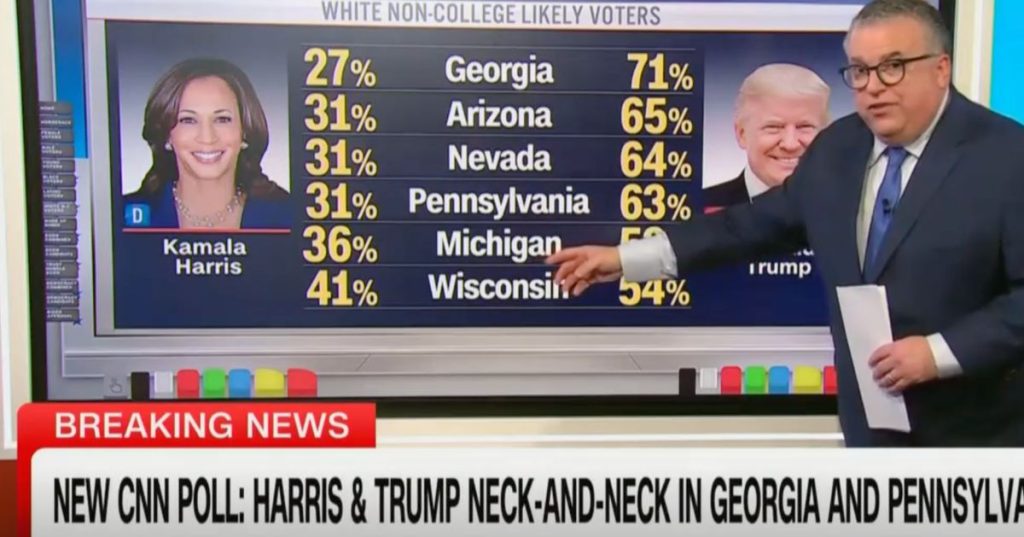David Chalian, CNN’s political director, highlighted concerning polling data for Democratic vice president Kamala Harris among non-college-educated white voters as a potential issue for her in the 2024 election. According to new polling conducted by SSRS for CNN, former President and current GOP nominee Donald Trump holds a significant lead over Harris in this demographic in key states such as Georgia, Arizona, Nevada, Pennsylvania, Michigan, and Wisconsin. Trump’s support among non-college-educated white voters ranged from 64% to 71% in these states, while Harris lagged behind with only 27% to 31%.
Chalian specifically pointed out Trump’s strong base among white voters without college degrees and the significant margin by which he leads Harris in these key battleground states. While Trump’s polling numbers were notably higher than Harris’, the overall polling data indicated that support was split between the two candidates in these crucial states. CNN’s report on the polling highlighted that around 15% of likely voters remained undecided, suggesting that a sizeable portion of the electorate could potentially shift their views as the campaign intensifies in the final weeks leading up to Election Day. This uncertainty underscores the competitiveness of the race in these battleground states.
The disparity in polling numbers between Trump and Harris among non-college-educated white voters is particularly concerning for the vice president, as this demographic has been a strong base for Trump in past elections. Chalian emphasized that the strong support for Trump within this group serves as a warning sign for Harris and her campaign as they prepare for the 2024 election. While Harris faces challenges in winning over this key demographic, the overall battle in battleground states remains closely contested, with both candidates having a significant share of support and a sizeable number of undecided voters.
As the race in battleground states heats up in the final weeks leading up to the election, attention will increasingly focus on the campaign activities of both candidates and their efforts to sway undecided voters. Chalian noted that the fight in these key states is expected to be tight, with both Harris and Trump vying for support among crucial voter groups. With a considerable number of undecided voters, the outcome of the election in these battleground states remains uncertain, making it crucial for both campaigns to ramp up their efforts and engagement with voters as the race intensifies.
Despite the challenges posed by Trump’s strong base among non-college-educated white voters, Harris and her campaign have an opportunity to make inroads and appeal to undecided voters in key battleground states. The polling data indicate a close race between Harris and Trump in these crucial states, with both candidates having a significant share of support and a sizable number of undecided voters who could potentially swing the election in either direction. As the campaign intensifies in the final weeks before Election Day, the focus will be on how both candidates engage with voters and make their case for why they should be chosen to lead the country in the next term.


